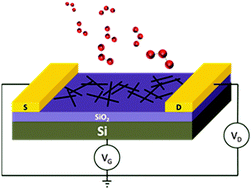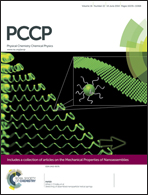Effect of ozone exposure on the electrical characteristics of high-purity, large-diameter semiconducting carbon nanotubes
Abstract
In this study, we have elucidated the interactions between ozone and carbon nanotubes by monitoring the characteristics of field-effect transistors based on polymer-sorted, large-diameter semiconducting carbon nanotubes. The drain–source current of these transistors initially increases with ozone exposure and then it progressively decreases with increasing exposure beyond 3 min. This non-monotonic dependence of the drain–source current can be ascribed to two competing processes. At short ozone exposure, p-doping of carbon nanotubes dominates; the drain–source current thus increases as a result of increasing hole concentration. This effect is most evidenced in a progressive threshold voltage shift towards positive voltages with increasing exposure to ozone. At extended ozone exposure, chemical oxidation of carbon nanotubes instead dominates. The drain–source current decreases as a result of decreasing hole mobility. This effect manifests itself in a monotonic decrease in the mobility of these devices as a function of ozone exposure.


 Please wait while we load your content...
Please wait while we load your content...